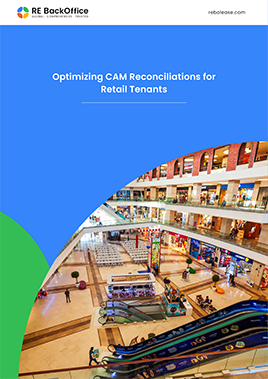
In the dynamic landscape of commercial real estate, traditional fixed rent structures are increasingly being challenged by innovative models. One such model gaining traction is Variable Rent, offering both landlords and tenants a potentially more flexible and adaptable leasing arrangement.
What is Variable Rent?
Variable Rent, also known as performance-based rent or turnover rent, deviates from the standard fixed rent model. Instead of a pre-determined monthly or annual payment, the rent fluctuates based on the tenant's business performance. This performance is often measured by metrics like:
- Turnover: The total revenue generated by the tenant within the leased space.
- Profit: The net income earned by the tenant after accounting for all expenses.
- Sales volume: The total quantity of goods or services sold by the tenant.
Metrics used to calculate Variable Rent
The specific metric used and the calculation method are established in the lease agreement, ensuring transparency and fairness.
- Variable Rent Percentage: This percentage determines the portion of the tenant's performance that translates into rent. For instance, a 10% variable rent on turnover would mean the rent increases (or decreases) by 10% for every unit of revenue generated above (or below) the agreed-upon threshold.
- Caps and Minimums: To provide predictability and prevent extreme fluctuations, leases may incorporate rent caps, limiting the maximum increase, and minimum rent guarantees, ensuring a baseline income for the landlord.
- Breakpoints and Base Rent: The lease agreement defines specific performance thresholds, known as breakpoints. When the tenant's performance surpasses a breakpoint, the rent increases proportionately. Conversely, if performance falls below a breakpoint, the rent might decrease or remain unchanged with a set base rent acting as a minimum guaranteed income for the landlord.
Benefits of Variable Rent:
Alignment of Interests:
Variable Rent fosters a sense of partnership between landlord and tenant. Both parties share the risk and reward, incentivizing the tenant to optimize their business and the landlord to provide a space conducive to success.
Flexibility for Tenants:
Startups and businesses with uncertain revenue streams benefit from the flexibility offered by Variable Rent. They avoid the burden of hefty fixed rents during initial phases and reap the advantage of lower rents during slow periods.
Market Responsiveness:
Variable Rent adjusts automatically to reflect market fluctuations. In a strong market, landlords can capture a share of the tenant's success. Conversely, during economic downturns, rents may automatically adjust to minimize the tenant's financial strain.
Higher Occupancy Rates:
The potential for lower rents during lean times can attract tenants, potentially leading to higher occupancy rates for landlords.
Considerations for Variable Rent:
Transparency and Clarity:
The lease agreement governing Variable Rent must be meticulously crafted, clearly outlining the performance metric, calculation methods, breakpoints, variable rent percentage, and caps and minimums.
Accounting and Record Keeping:
Accurate and transparent accounting practices are crucial for both parties. Tenants need to maintain detailed records of their performance metrics, while landlords should have a system to verify these records.
Suitability of Business Model:
Not all businesses are ideal candidates for Variable Rent. Businesses with a stable and predictable revenue stream might not benefit as much as those with high growth potential or volatile sales cycles.
Market Conditions:
Variable Rent might be more suitable in markets with strong economic growth or high vacancy rates. Conversely, in stable markets with steady tenant demand, fixed rents might offer greater certainty.
Variable Rent presents a compelling alternative to traditional fixed rent structures in commercial real estate. By aligning the interests of landlords and tenants, it fosters a more collaborative leasing environment. However, it requires careful consideration and a well-drafted lease agreement to ensure a successful outcome for both parties. Businesses should evaluate their financial models and risk tolerance before opting for Variable Rent, while landlords should assess market conditions and their desired level of risk-reward balance. As the commercial real estate landscape evolves, Variable Rent is likely to play an increasingly significant role, offering a flexible and dynamic approach to leasing arrangements.


